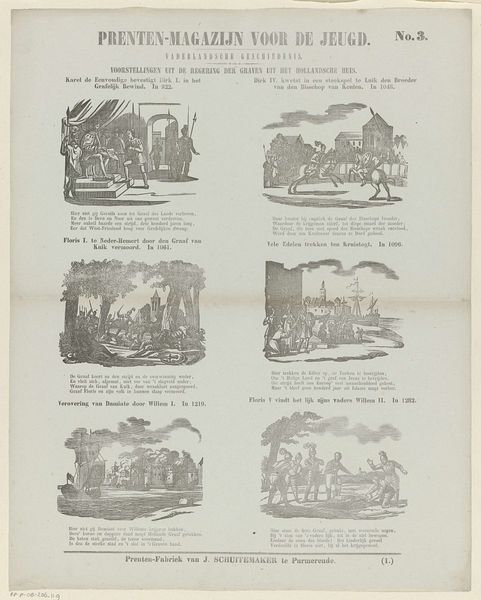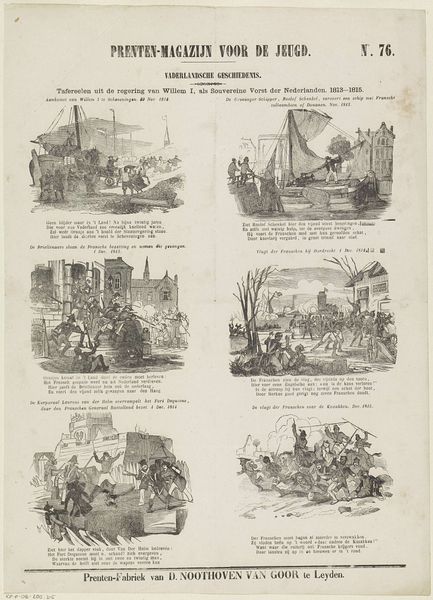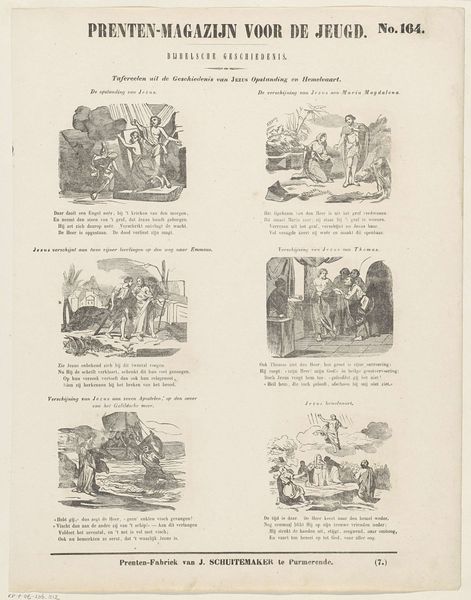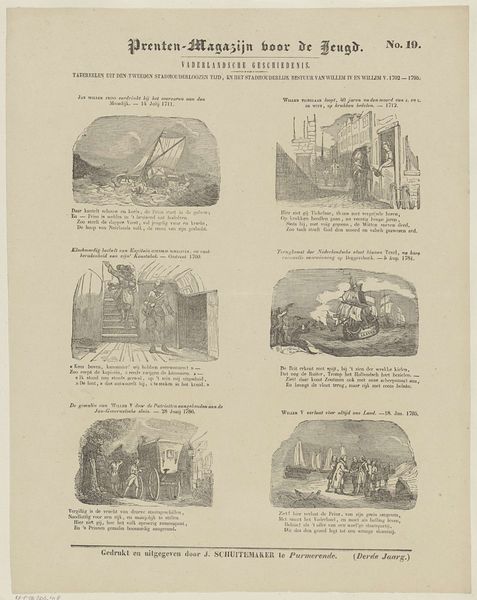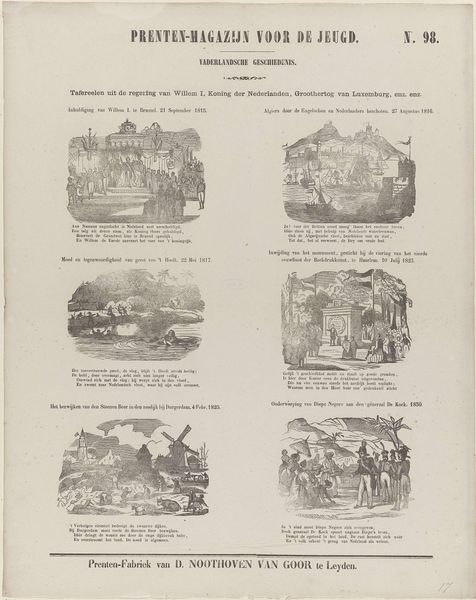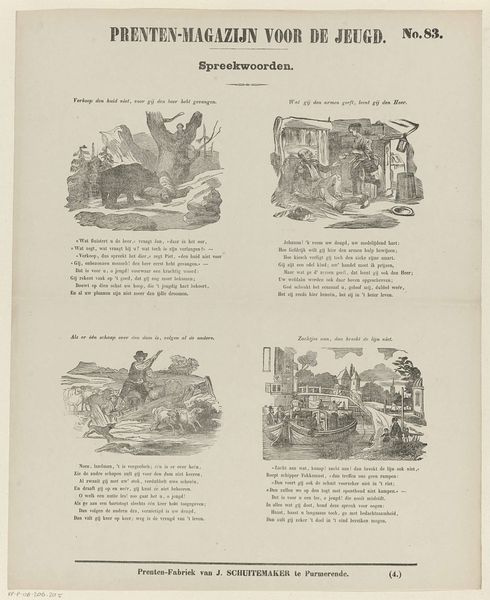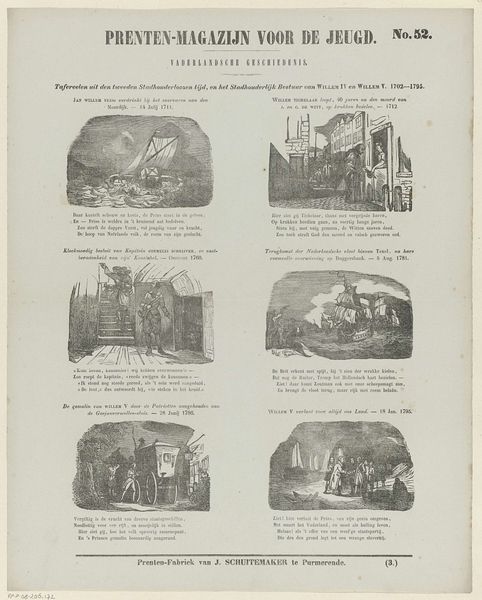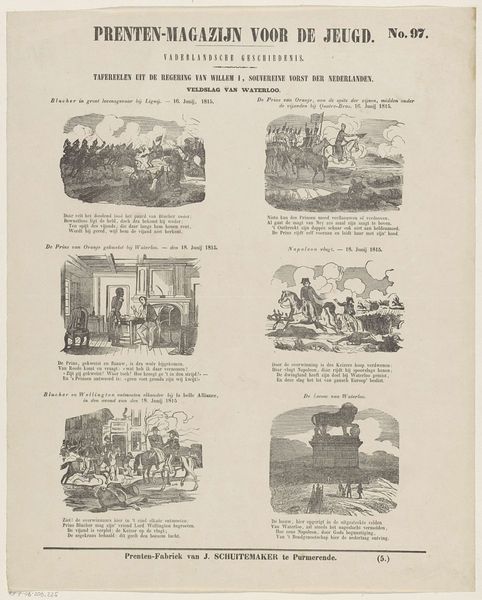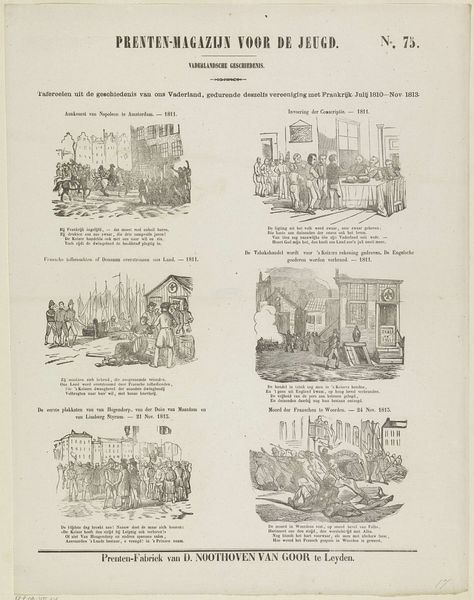
Tafereelen uit de regering van Willem I, als souvereine vorst der Nederlanden. 1813-1815 1850
0:00
0:00
graphic-art, mixed-media, print, engraving
#
graphic-art
#
mixed-media
#
dutch-golden-age
# print
#
romanticism
#
history-painting
#
engraving
Dimensions: height 422 mm, width 336 mm
Copyright: Rijks Museum: Open Domain
Curator: This is "Tafereelen uit de regering van Willem I, als souvereine vorst der Nederlanden. 1813-1815," or "Scenes from the reign of William I, as sovereign prince of the Netherlands. 1813-1815". It’s an 1850 mixed-media print, part of a series likely mass-produced given the “Prenten-Magazijn” title. Editor: My first impression is chaotic movement, yet rigidly contained within these small frames. There's a certain energy, a raw kind of materiality, from the graphic-art quality and dense cross-hatching. How was something like this produced, for what purpose, and how accessible would such images have been? Curator: The printmaking factory of J. Schuitemaker produced it. The style harks back to Dutch Golden Age engravings, simplified for broader appeal. The subject matter – Willem I’s early reign – signals a specific nationalistic agenda. This romanticised, heroic vision would resonate in the mid-19th century, as national identity consolidated. Editor: So, we have history re-presented through the relatively new medium of mass-produced prints. These scenes show William’s arrival, battles, and key events – the material here speaks of a rising sense of Dutch identity, but who could afford it? Were these destined for schools, homes, or perhaps even framed in public spaces? The cost and production method dictated access and thus defined whose narrative of Dutch history was amplified. Curator: Precisely! And the mixed media aspect is significant. Engraving provided the detailed linework, while other printmaking techniques, like etching or aquatint, could have added tonal depth and complexity efficiently. The very layering of techniques reflects the multi-layered political messaging, carefully crafted for popular consumption. The labor that went into this object highlights the scale and distribution strategy from its initial printing. Editor: It also points to a larger issue, right? How art served specific purposes - the manufacturing of national pride through visual narratives. This image isn’t simply an artwork; it’s a carefully constructed artefact deeply embedded within socio-political currents, revealing how even mass-produced images played a role in shaping collective identity. Curator: Absolutely. The confluence of artistic skill and industrial printing serves to both enshrine and popularize the events selected from Willem I's rule. This brings national narratives closer to people. Editor: Right. A blend of manufacturing and art, serving to reinforce the very systems in place that allowed its production in the first place. Curator: It gives a lot to reflect on. Editor: Indeed. A snapshot of history reflecting upon itself.
Comments
No comments
Be the first to comment and join the conversation on the ultimate creative platform.
